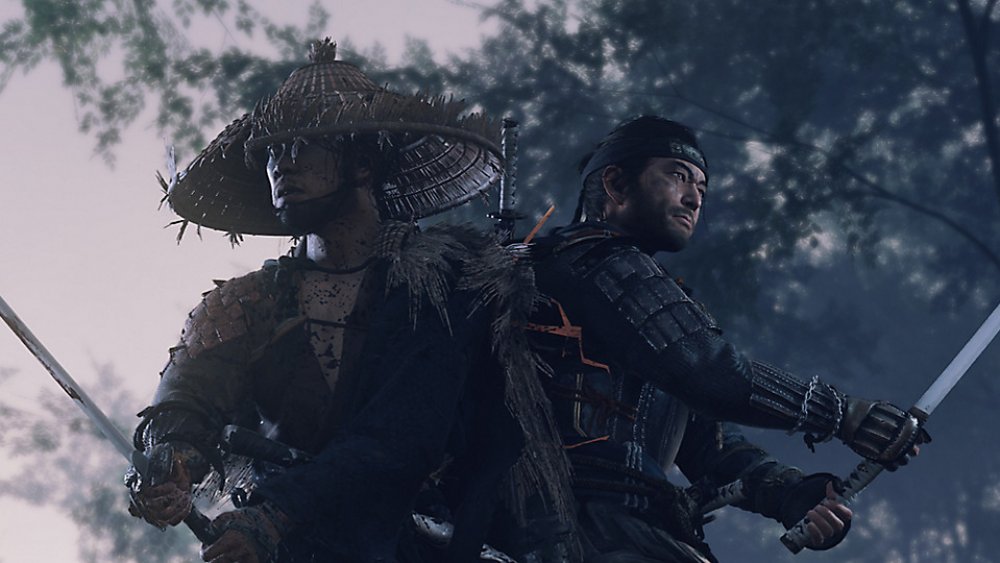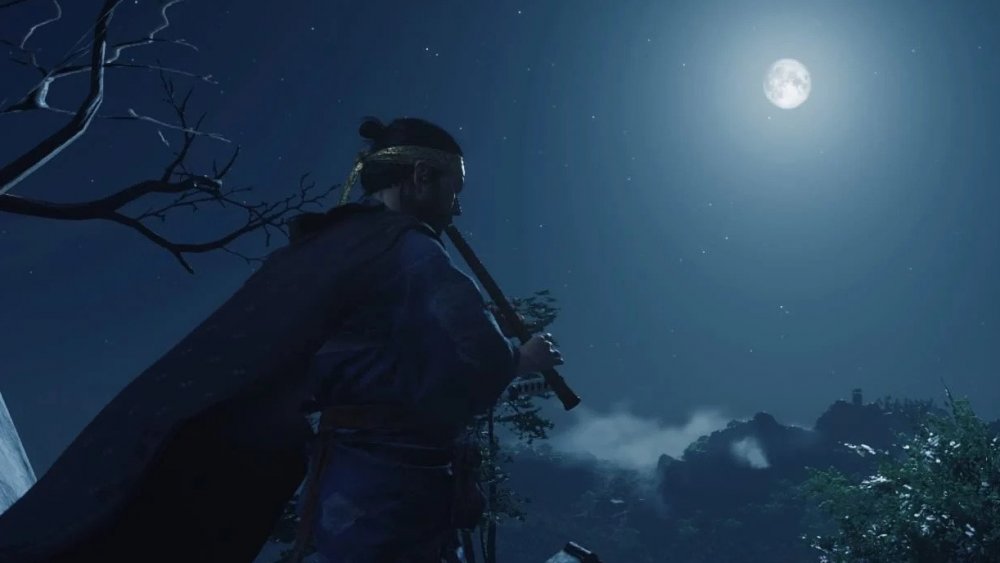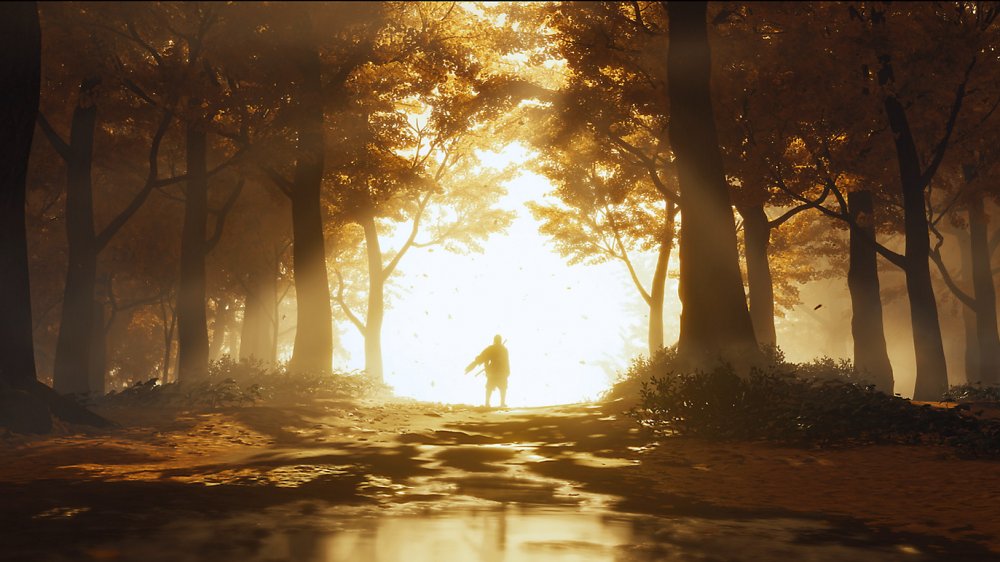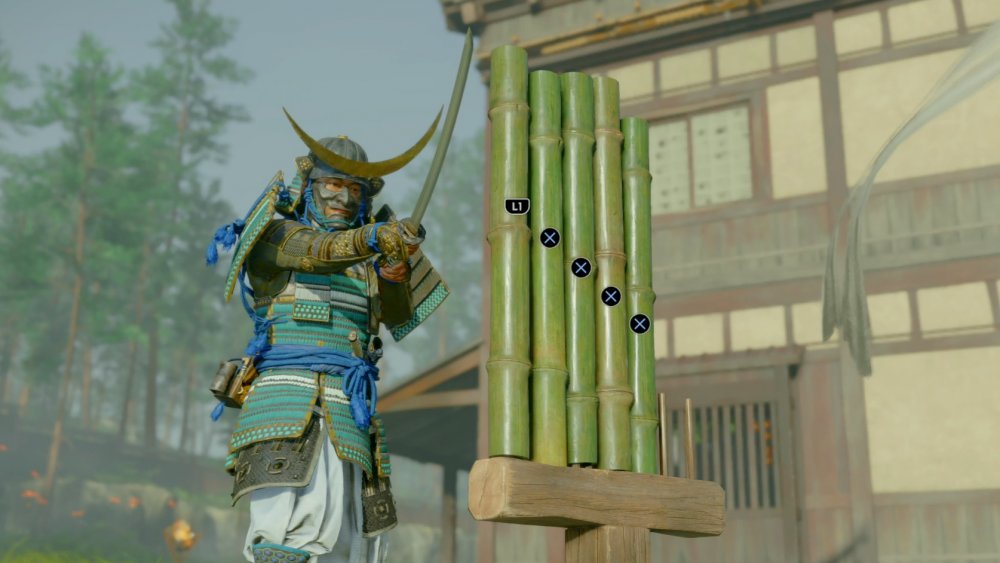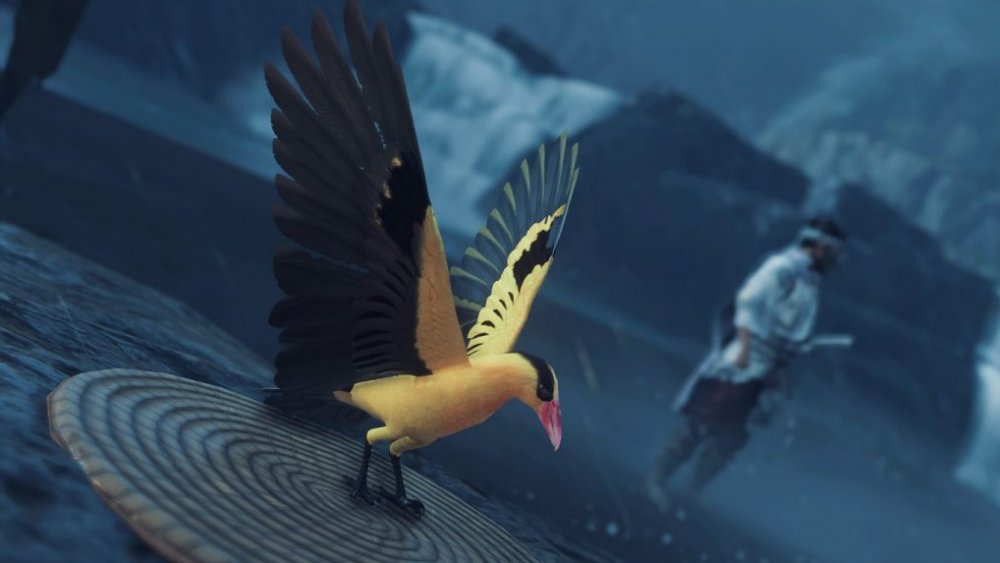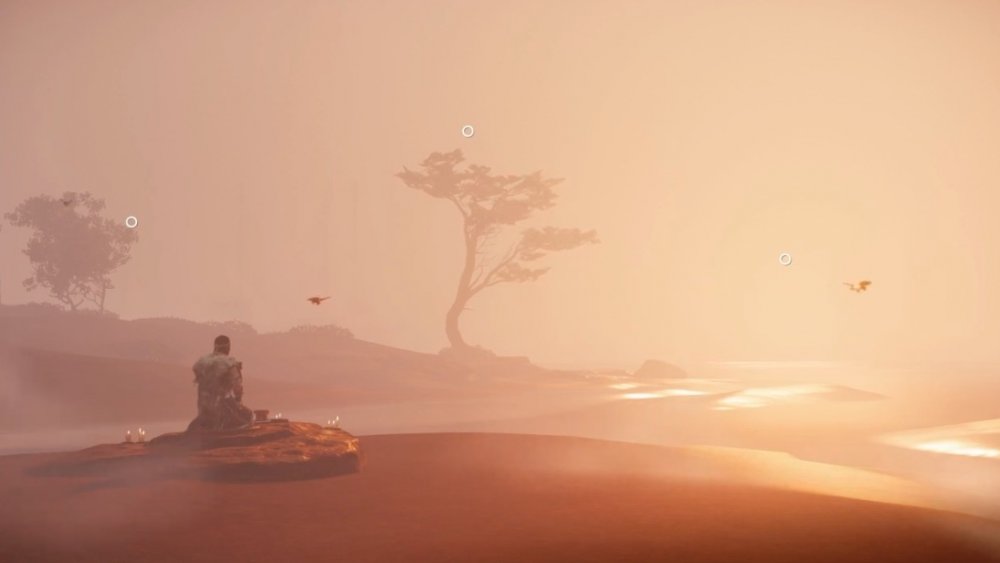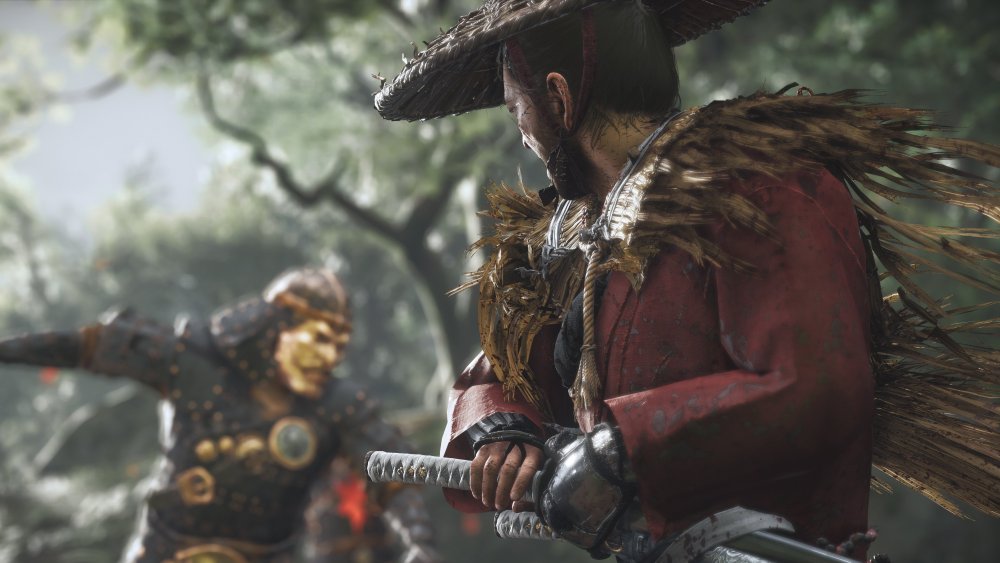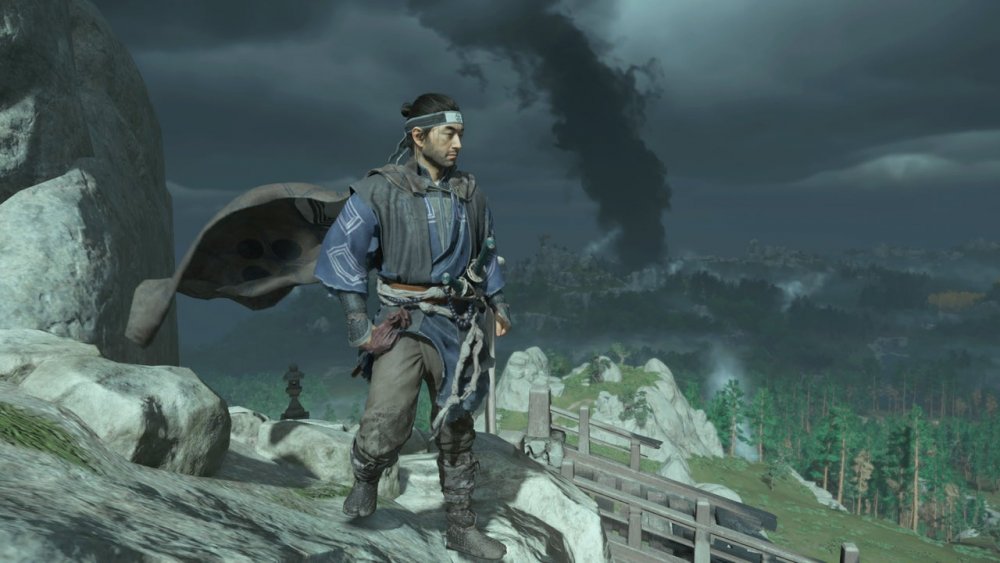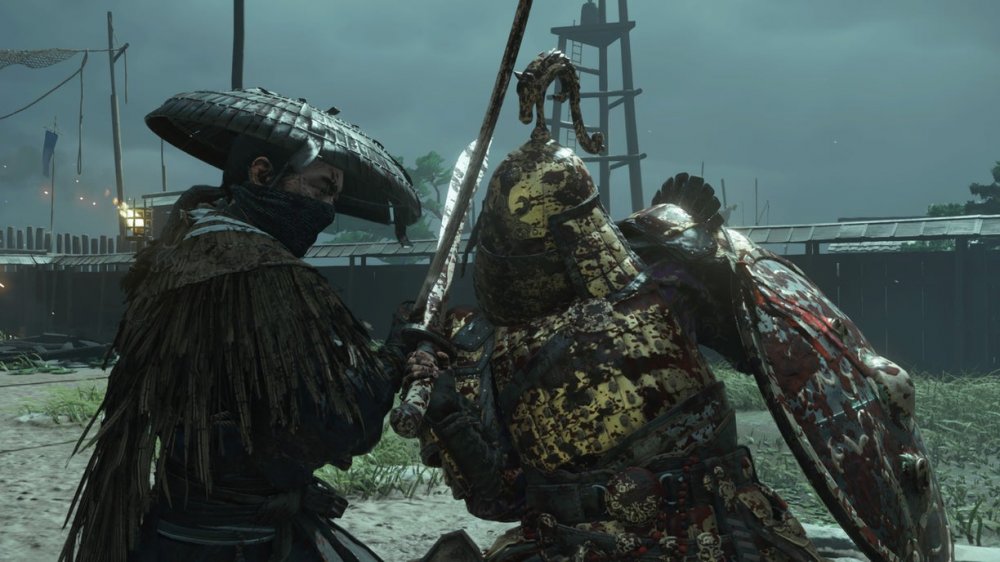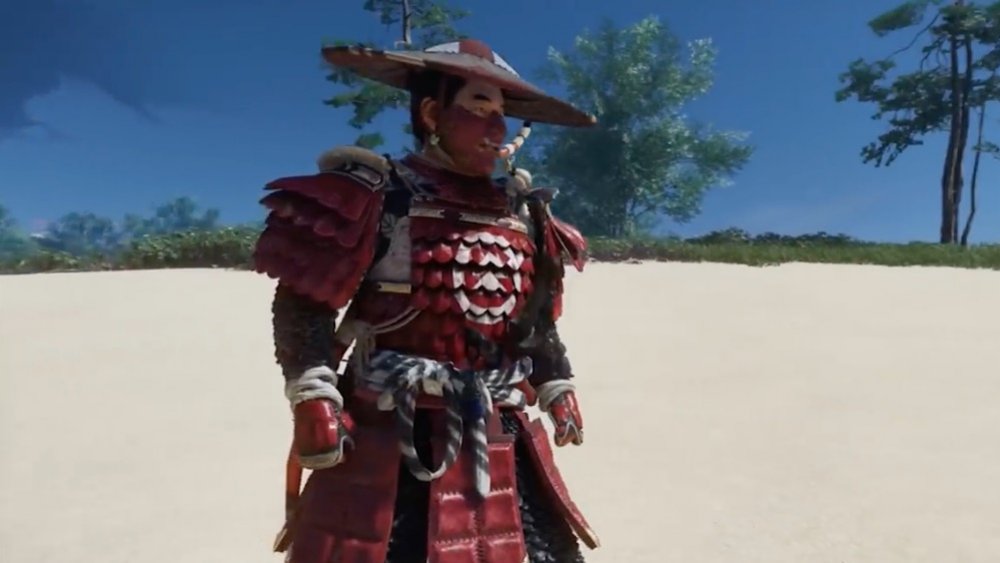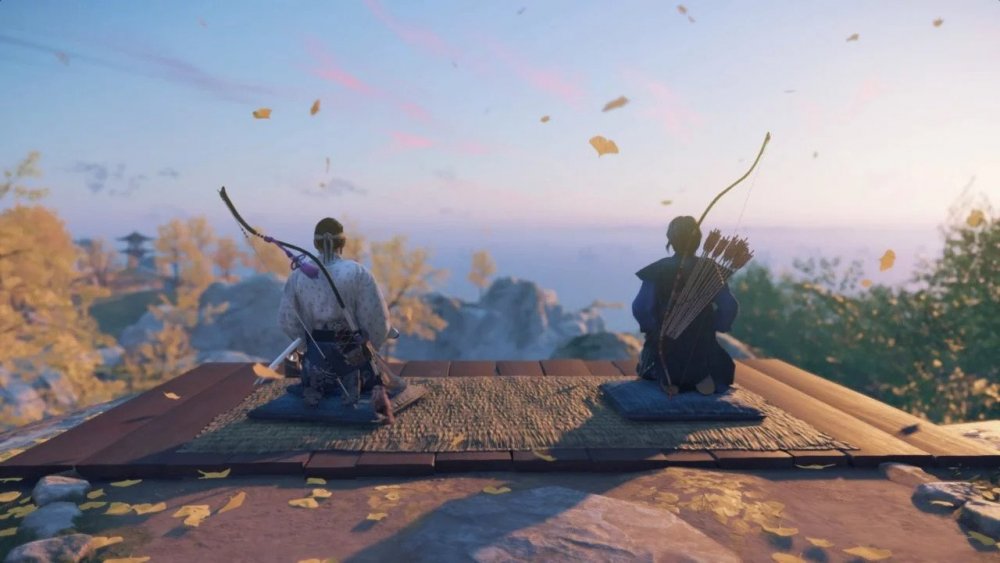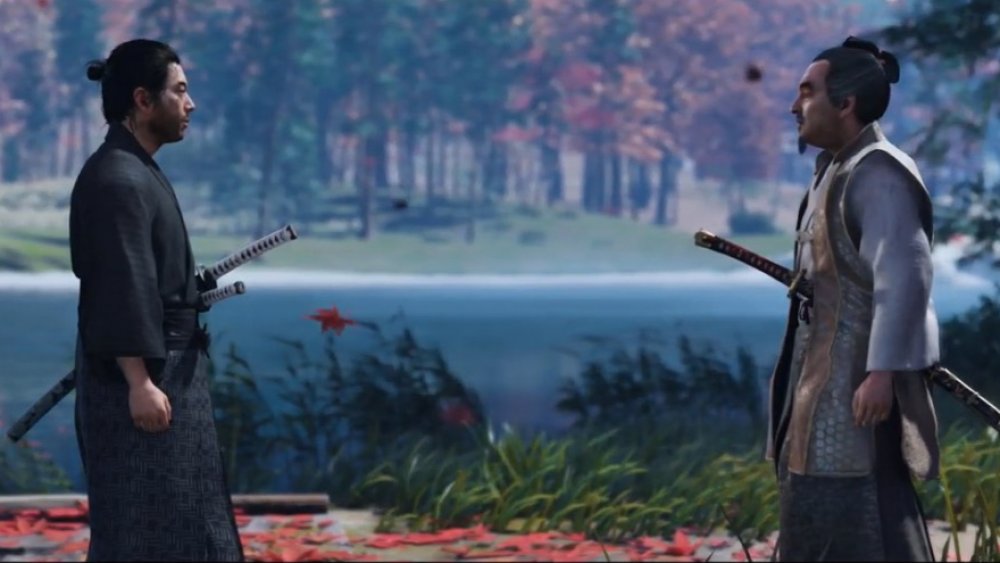You've Been Playing Ghost Of Tsushima All Wrong
The beautiful visuals, heart-pounding excitement, and awesome combat mechanics of the open-world action-adventure Ghost of Tsushima are enough to draw gamers in for hours at a time. If you're looking for a more leisurely stroll through this behemoth of a game, you can adjust the difficulty level so you're dispatching your enemies with one well-placed thrust. But, if you're not using certain tricks to make your way through the story, you're missing out on some fun mini-challenges and other aspects that could make the game a touch easier and more enjoyable for you.
From taking relaxing breaks to compose haiku to cliff-diving, there are plenty of ways Ghost of Tsushima offers organically-embedded shortcuts and assistance to your character, Jin Sakai. If you're not taking advantage these little tips and tricks to streamline your game experience, you might just be playing this PlayStation-exclusive title all wrong.
Not using the DualShock 4's touchpad
Ghost of Tsushima is one of the rare games that makes the touchpad of the PlayStation DualShock 4 controller actually pretty useful. If you swipe left, you can take out and start playing your flute, which allows you to change the weather. This can be especially helpful if you encounter fog that obscures your vision, for example.
If you swipe right, you can clean and put away your sword in a cool animation that was initially seen in gameplay trailers for Ghost of Tsushima. While this little trick doesn't seem to have any gameplay implications, it makes you look pretty cool.
If you swipe up, you'll summon the Guiding Wind, which will lead you where you need to go. You can use it to find a marked location and to get collectibles. If you swipe down, you'll bow. This helps you show respect to others, but it also lets you unlock the "Honor the Unseen" trophy if you do it in front of hidden altars.
Not using Photo Mode to scout the landscape
Ghost of Tsushima has a truly impressive Photo Mode that isn't only for taking screenshots, although it has some sophisticated and flexible options for grabbing selfies. You can set your camera's angle, focus distance, and depth of field. You can also use filters, include particles in your shots, vary the exposure, change wind speed and direction, and take tracking shots. You can even adjust the weather and the time of day, or stamp your image with a big old Japanese Ghost of Tsushima character. While you're at it, give Jin a funny expression and enjoy.
All these cool perks can actually upgrade your gameplay because you can use Photo Mode as a useful guide to navigation. Using the Focal Length setting allows you to zoom in from a long distance — which is great for surveying far-off locations, or finding footholds in steep cliff faces. You can also zoom in on question marks onthe map to see if they're worth trekking to. Photo Mode is a surprisingly useful tool, if you use it intelligently.
Not getting the Bamboo Strikes
If you want to survive Ghost of Tsushima, you're going to need as much Resolve as possible. And one way you can increase your Resolve stat permanently is to find the 16 Bamboo Strikes located all over the map. Searching these out basically provides you with a quick and fun mini-game, with the result that you can use your Resolve to heal faster and pull off special moves.
First, you have to find them. You'll notice Bamboo Strikes are marked with a white banner on the map. Winning the extra Resolve requires you to play a short memory game to strike down the bamboo stalks. You'll be presented with a combination of action buttons, and then you have to remember the order in which to press them within the time allotted. Once you've done this three times with increasingly larger combinations, you'll get your reward.
Not watching for the golden birds
As you travel through the world, you'll see golden birds flying above you. While it may not be immediately obvious to you what they're for, you're definitely going to want to follow them.
It's all part of the Ghost of Tsushima's built-in method for getting you where you should go. Watch out for these yellow songbirds — and if you can't hear them, you might want to activate your Focused Hearing ability to pick them up more easily.
Basically, the birds take you to the nearest point of interest. This could be an enemy camp, a haiku location, a side quest or just a really pretty landscape. Whatever it is, you'll find something to do there and it will be worth your time. These golden birds actually offer a unique visual cue that allows you immerse yourself even further in an environment at the same time, so don't miss them!
Not getting in some peaceful haiku time
Among the places of interest the golden birds may lead you to in Ghost of Tsushima, the haiku locations allow you to sit down, enjoy the beauty of the scenery, and compose poetry. It's not particularly good poetry, as you're basically given three pre-written lines to put together and their meaning doesn't get terribly profound. Nor does the system adhere to the true spirit of the ancient art form according to a Kotaku interview with a haiku expert.
Still, this little activity can net you some rewards, such as headbands you can use to change and customize Jin's appearance — whether your haiku is good or not. Additionally, it gives you a moment's respite to recharge a bit if your last battle was overly tough. Now, that doesn't mean you'll get any extra healing or anything — but you will be able to more fully immerse yourself within this atmospheric world, which is worth slowing down the pace a touch.
Not drawing on different combat stances
At the beginning of Ghost of Tsushima, you'll have a single combat stance to utilize. However, as you progress through the game, you'll start to unlock other stance options. Since you've already grown accustomed to the original stance, you may not initially think to use the stances you eventually earn, but you should start practicing them immediately. It makes a big difference in the game, especially once you start upgrading them and using complimentary armor.
Don't just stick with one stance during the course of a battle. You should alternate between them all — and you should be changing it up as you go on the offense to take down your opponents, who appear to like traveling and attacking in groups. As Forbes' Paul Tassi points out, each individual enemy requires a different stance to achieve the best results: Stone for Swordsmen, Water for Shields, Wind for Spears and Polearms, and Moon for Brutes.
When you use these combat stances against their corresponding enemy type, you can definitely mete out some major stagger damage that'll make it much easier for you to get in a life-ending combo.
Not taking advantage of fast travel
The landscape of Tsushima Island as depicted in Ghost of Tsushima is a big, open world — you'll notice that immediately once you check out the map for the first time. To make your mission easier, you'll find a mechanic for getting places called Fast Travel. You have to unlock it, so you can only use it for locations you've visited before.
You don't need any special resources to use Fast Travel, and you don't have to go anywhere special. However, you can't do it in the middle of a battle or while there are opponents in the vicinity. You also can't Fast Travel during some quests, especially where people are following along with you.
You can, however, take your horse with you (or call for it once you arrive). Once you have discovered a town, hub, fox den, shrine, or other area, you will always be able to get there fast and easily — and without fighting a bunch of people — through this shortcut. Simply open your map with the Options button, point to the location, and press Triangle. You'll see a loading screen with tips on it, but it won't take long for you to reappear at your destination.
Not ending your enemies' suffering
Once you injure an opponent in battle, you may see one of your nearby enemies start to crawl away from you. If you're tempted to show mercy and let any stragglers go — don't. When you're prompted to "End Suffering," do it. You'll get an extra Resolve boost from ending their lives instead of letting them go.
This is something you were briefly taught during the tutorial as a piece of text exhorting you to "kill enemies," although you may not have taken it to mean all your enemies, all the time. Each time you defeat someone, you'll receive one charge. You may receive up to three charges for a single kill during standoffs.
Since you definitely want as much Resolve as you can get, this is a good way to recharge. Squelch your squeamishness about those brutal, gory kills and execute those who oppose you. Then watch those little circles that make up your Resolve meter fill up.
Not changing your armor a lot
In some games, changing your clothes is more a matter of personal preference than anything else. However, in Ghost of Tsushima that is not the case. Each of Jin's outfits has a separate purpose, so you should use them strategically. Choose what you're going to wear based on your playing style as well as the bonuses you may get.
Headbands, hats, headscarves, and masks don't add anything to your abilities, so feel free to don these based on their coolness factor. It's the body armor that's key here. In this game, even running around mostly naked in the Fundoshi outfit nets you an advantage, because you make no noise when you're running. But if you choose to don a certain type of armor, you can reap the benefits. Ronin Attire, for example, makes you much harder to detect. And if you put on the Samurai Clan Armor, you'll even get extra Resolve when you take damage.
As you can see, it's worth it to think a bit about what you're wearing as you go through this world. And yes, you can also look awesome as well.
Not completing the side quests
While not every side quest will get you an exciting reward, some do. Even the ones that are optional are worth playing at some point, as they add to characterization and create depth within the narrative.
You can get to side quests by locating the Tales of Tsushima markers on the map, talking to NPCs, and going through your main quest. A lot of these side tales simply require you to run your sword through a bunch of Mongols, but others are more plot heavy. One, for example, features an ongoing story between supporting characters Ishikawa and Tomoe. This spans several of the less-vital quests and packs a truly emotional punch.
Side quests can also help you obtain armor or charms, and increase your stats. Since armor and charms play a large role in strategy and loadouts, the more combat-oriented players will want to pursue these rewards for the full experience.
Not embracing your inner ghost
As your character moves through the landscape, you might be tempted to try things the righteous samurai way like your mentor Lord Shimura has always taught. That means not ambushing guards so others don't know you're coming, not using Kurasawa Mode to quietly locate and take out your quarry with your Enhanced Hearing skills, and not hitting people in the back with your arrows.
This becomes harder as you try to overcome increasingly stronger adversaries to achieve your objectives and thwart the Mongol invasion of Japan. The dark side also becomes more tempting as you unlock the Assassination ability and get more stealth charms. Best advice here: Don't even try to stay on the straight and narrow. Ignore Lord Shimura's cut-scene admonitions and use that poison.
Not only is there no point to staying "good," using unconventional and less-than-savory tactics shapes and defines Jin's journey in the game. Questionable moral standing does not affect the decision you must make at the end of Ghost of Tsushima, a dilemma you will have to contend with no matter how you behave earlier in the game. So, simplify your experience and do what it takes to get the job done.

